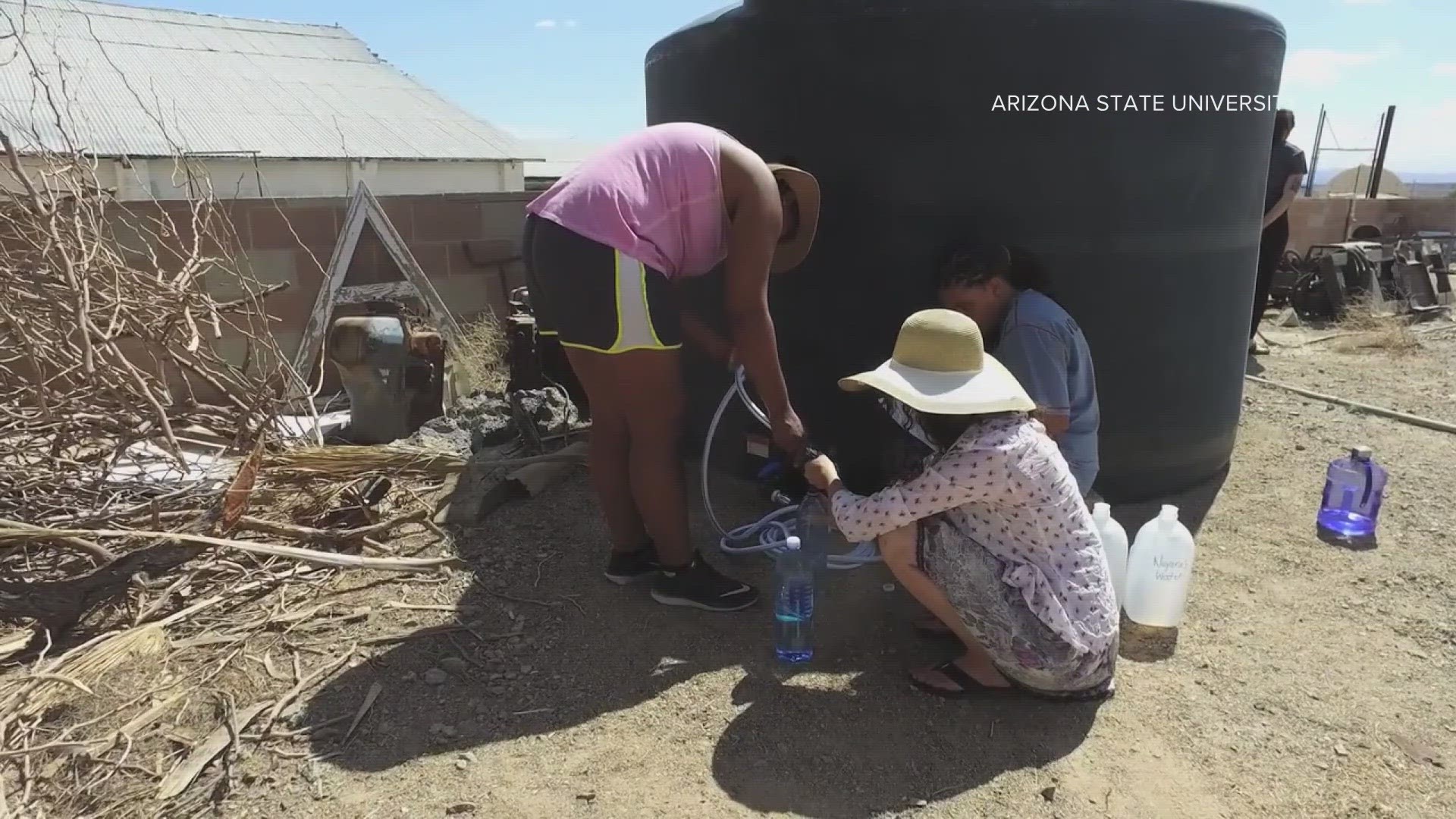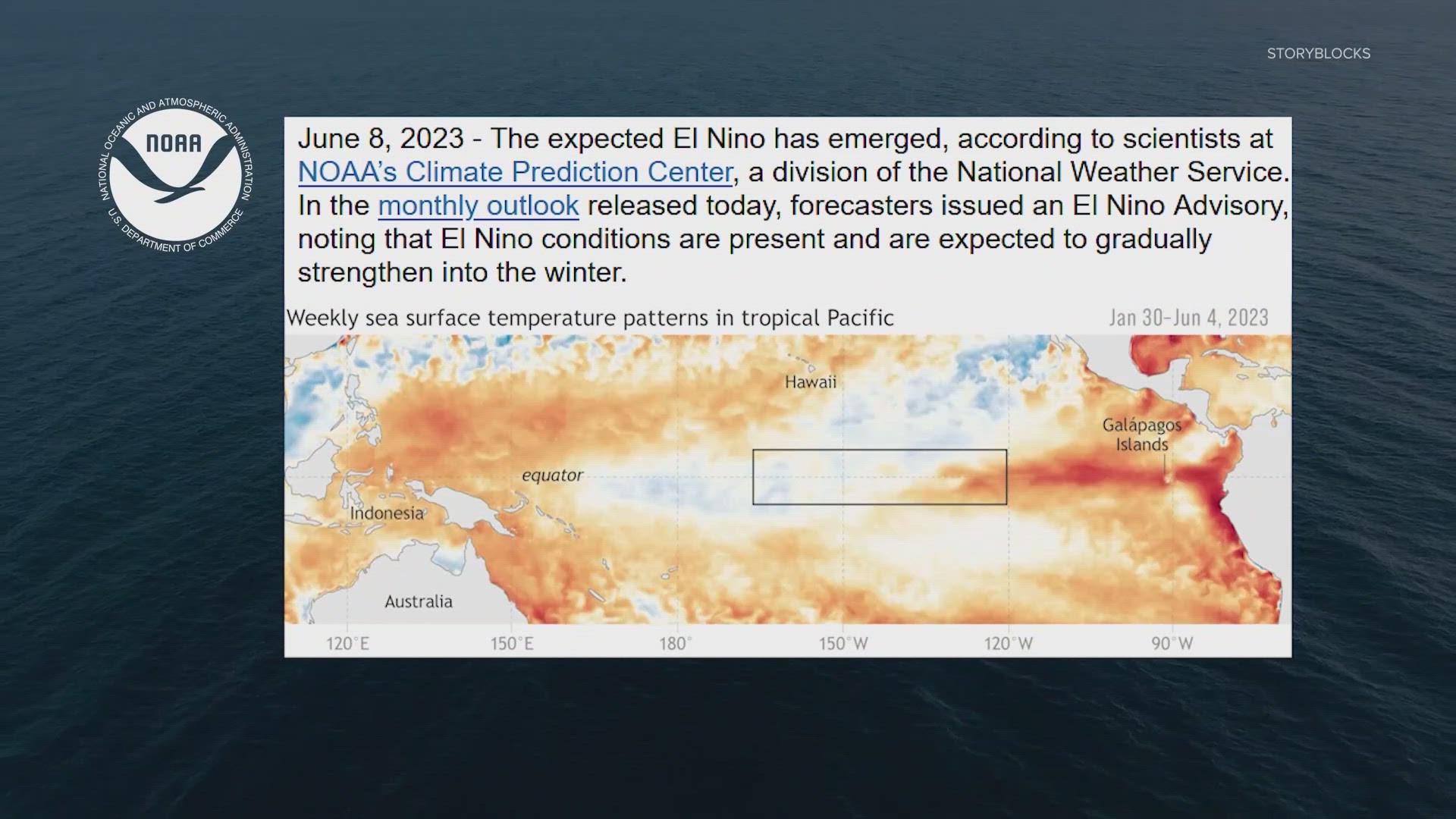PHOENIX — As water resources become more scarce in the desert, a group from Arizona State University is challenging all of us to be more water aware. It all started with the Drylab challenge at ASU back in 2017. That’s when a group of eight students lived on four gallons of water or less per day, per person, for one month in the dry and hot Mohave desert.
Now, ASU is challenging Arizonans to do something similar, but not quite as extreme. It’s a simple challenge and a new one started Nov. 1. There are 30 daily prompts on Instagram, or an email from ASU. The university encourages participants to pick at least seven water savings actions to complete, or one for every day of the month.
This all stems from that 2017 Drylab challenge when ASU students and some faculty experienced life under extreme water scarcity, four gallons of water per day, per person. For perspective, ASU said the typical person who lives in Tempe uses anywhere from 80 to 100 gallons a day.
Marco Janssen, an ASU Sustainability Professor, also participated in the Mohave Desert experience.
“There was no running water nearby so we were very isolated in a very dry spot and this was in May and June," Janssen said. "In June the temperatures, we got into a heat wave with 110 degrees Fahrenheit. So, this was quite an extreme situation.”
While ASU launches another water-savings challenge, University of Arizona professor Mike Crimmins said they're tracking an Arizona winter which could be quite eventful. Crimmins said they’ve been watching an El Nino event develop over the last six months, and it came on strong in May and June.
Crimmins said there’s a 75 to 85 percent chance this year’s El Niño will be in the strong category. And there’s a 30 percent chance it’ll be historically strong. That would be equivalent to the 97-98 or the 2015-2016 events, he said.
The strong events have a better chance of impacting the Southwest with more winter precipitation. And setup happens as warmer water in the Eastern Pacific reorganizes the weather pattern, dragging the storm track down aiming it at Arizona.
“It can deliver us for an extended period of time in the mid-winter, storm after storm after storm," Crimmins said. "It can lead to really good winter rains. It can put down good snow in the High Country. The downside is, that it can even do so much of that, that it can lead to some flooding events later in the winter.”
Crimmins added it’s still uncertain as to whether this will be historically wet for Arizona, or an average precipitation winter. Historically, El Niño typically starts to impact the Southwest later in winter, so late December through March is prime time. That’s for the shift in the jet stream and extended wet periods.
Crimmins also stated if a lot of winter precipitation doesn’t start to develop by January 2024, climate experts start to look across the West and see where the wet pattern is setting up.
While the outlook is still uncertain, experts said a good El Niño pattern could improve our Arizona drought.
>> Download the 12News app for the latest local breaking news straight to your phone.
12News on YouTube
Catch up on the latest news and stories on the 12News YouTube channel. Subscribe today.


